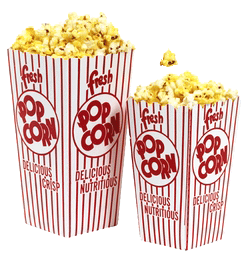Rationale:
In this lesson, students will gain a better understanding of /p/, the phoneme that is represented by the letter P. They will learn how to associate the “pop” sound that is made when popping popcorn, and how this sound uses the same sound as the spoken /p/. We will practice using words that have the /p/ to help the children better connect the words to the sound.
Materials:
Primary paper; pencils; chart with “Piper picked purple and pink poppies in the pasture”; blank drawing paper; crayons; Dr. Seuss’s ABC: An Amazing Alphabet Book! (Random House, 1963); word cards with PIG, PLAY, TOP, PICK, STOP, PET; assessment worksheet to identify pictures with /p/ [URL at bottom].
Procedures:
-
Say: Each letter in our alphabet has a special job, and sounds different from other letters, although sometimes it can be hard to tell the sounds apart. To make learning these sounds easier, we can watch how our mouths move when we say each letter. Today, we are going to learn the letter “P”. “P” makes the /p/ sound. The /p/ sounds like popping popcorn. [Show children a popping motion with your hands as you say /p/].
-
Now, let’s all find a partner and face them. Let’s pretend we are popcorn as we watch what our partners’ lips do. Your lips curl in as you prepare to say /p/. You release your lips and make a hard popping sound, blowing air out.
-
Let’s find the /p/ in play. We are going to say it really slow. Ready? Ppp-l-l-ay. Did you hear the pop? Alright, now try it while looking at your partner. Now lets try the word "pig". Do you hear the pop? What about in the word dodge? You hear dddd, not pppp.
-
Let’s try this with a story now: “Piper picked purple and pink poppies in the pasture”. Now everyone say it three times, looking at your partner. Now, let’s say it together, stretching /p/ out wherever you hear it. “Pppippper pppicked pppurppple and pppink pppopppies in the pppasture”. Let’s try it this time breaking the beginning /p/ off from the rest of the word: “/P/iper /p/icked /p/urple and /p/ink /p/oppies in the /p/asture”.
-
Now, I am going to pass out primary paper and everyone needs a pencil. We are going to use the letter “P” to spell /p/. We are going to start with a lowercase p. Start at the fence and draw a straight line down to the ditch. Then, we are going to make a backwards “c” and start at the top of the line at the fence and loop around to the sidewalk. I will come around and check, and once I put a sticker on your paper, practice writing nine more!
-
Call on students to answer and tell how they knew: Do you hear /p/ in pie or cake? Park or yard? Bed or pillow? When you hear the /p/, let’s make the popping motion with our hands that we did earlier: Piper, picked, purple, and, pink, poppies, in, the, pasture.
-
Say: Lets look at an alphabet book by Dr. Seuss called, Dr. Seuss’s ABC: An Amazing Alphabet Book! Dr. Seuss tells us silly stories and draws silly animals using each letter in the alphabet. Do you want to see what silly things he draws? Let’s look at this book to find out! Today, we are looking at the letter “p” [Read pages about p]. Now, we are going to make our own silly creatures that begin with a “p”, just like Dr. Seuss [children will draw a silly creature with an invented name beginning in “p”; display work]
-
Show PIG and model how to decide if it is pig or fig. The P tells me to pop my popcorn, /p/, so the word is ppp-ig, pig. Now it is your turn: PLAY: play or stay? TOP: top or take? PICK: tick or pick? STOP: stay or stop? PET: pet or met?
-
For the assessment, distribute the worksheet provided below.
References:
Worksheet: http://twistynoodle.com/circle-the-words-that-start-with-the-letter-p-worksheet
Shepherd, Anna, “Popping Popcorn with P” https://aes0050.wixsite.com/msshepherd/emergent-literacy
Dr. Murray, Bruce, The Reading Genie http://www.auburn.edu/academic/education/reading_genie/
Seuss, Dr. Seuss’s ABC: An Amazing Alphabet Book! Random House, 1963
For more lessons: Horizons Website on Reading Genie
Pop Goes the Popcorn
Emergent Literacy
